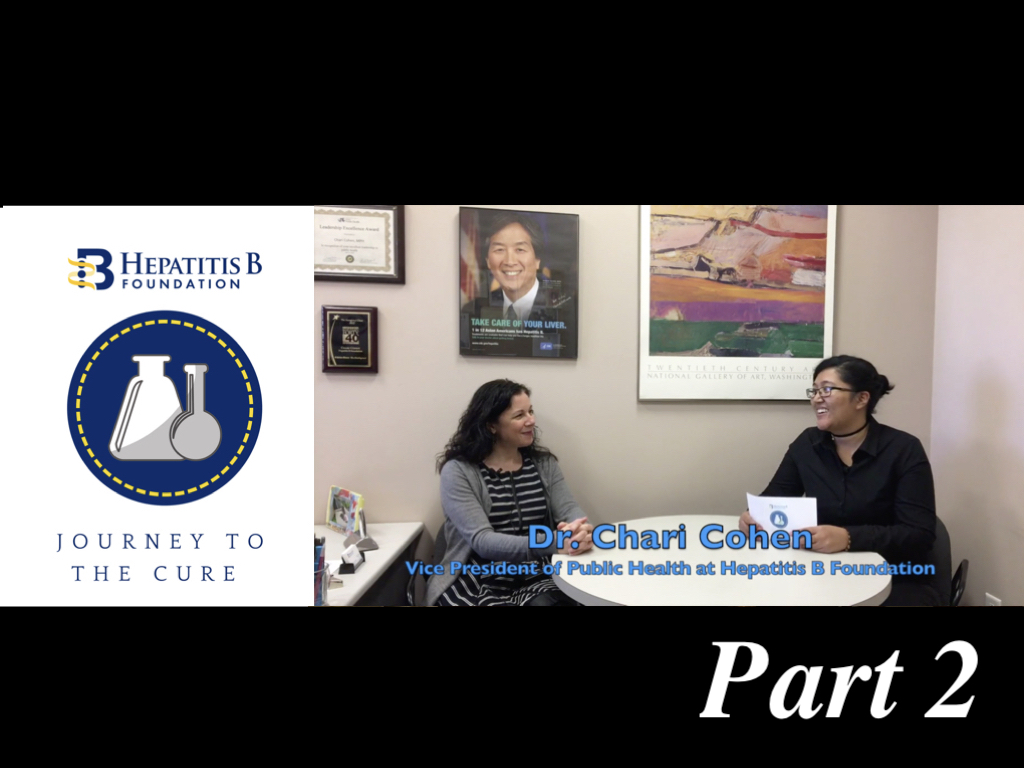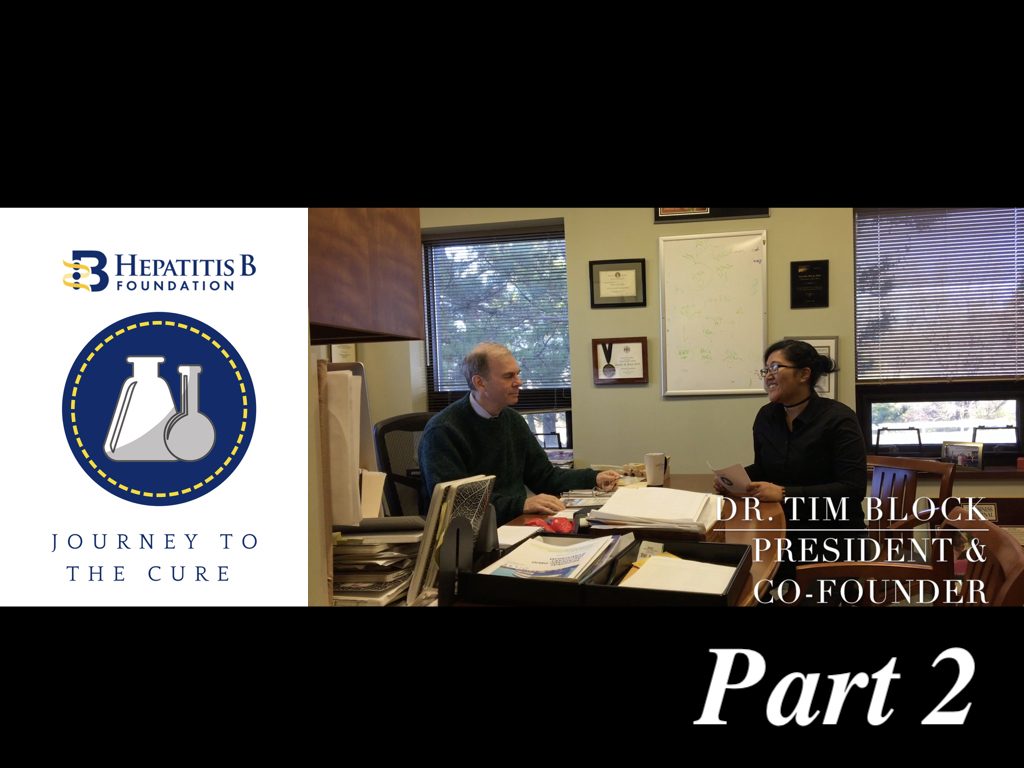
This November, the Hepatitis B Foundation attended The Liver Meeting – an annual conference hosted by the American Association for the Study of Liver Disease (AASLD). Inspired by the enlightening presentations and conversations at the conference, hepatitis B expert Timothy Block, Ph.D, co-founder and President of the Hepatitis B Foundation, took a moment to talk to us about the complexities of the hepatitis B virus and the status of a hepatitis B cure!
This is part one of a two-part series.
 Why is finding a cure for chronic hepatitis B so challenging?
Why is finding a cure for chronic hepatitis B so challenging?
 That’s the big question. A cure is only complicated until we are able to figure it out. Once we understand it, it will be simple! Hepatitis B is curable, but finding a cure for it is complex for two reasons. The first is that it is not a simple matter of virology. The virus establishes itself in a stable nest inside of the liver – called the covalently closed circular DNA (cccDNA) – and successfully invades the immune system. To do this, the virus enters a healthy cell and plants itself inside of the cell’s DNA – a component of the cell that allows it to function properly and produce more healthy cells. This makes it difficult – but not impossible – to create a treatment that will attack the hepatitis B virus while not damaging the rest of the healthy cell.
That’s the big question. A cure is only complicated until we are able to figure it out. Once we understand it, it will be simple! Hepatitis B is curable, but finding a cure for it is complex for two reasons. The first is that it is not a simple matter of virology. The virus establishes itself in a stable nest inside of the liver – called the covalently closed circular DNA (cccDNA) – and successfully invades the immune system. To do this, the virus enters a healthy cell and plants itself inside of the cell’s DNA – a component of the cell that allows it to function properly and produce more healthy cells. This makes it difficult – but not impossible – to create a treatment that will attack the hepatitis B virus while not damaging the rest of the healthy cell.
Another reason that finding a cure is so difficult is because of the body’s immune response. Typically, your body can recognize a virus as a potentially harmful invader, or something that is not supposed to be within your body. This triggers something called an “immune response”, which is when your body sends fighter cells to destroy the virus. With hepatitis B, the proper immune response often does not occur. Your body does not completely recognize the virus as a threat. Instead of eliminating the virus as it is supposed to, your body responds by creating an inflammatory reaction in the liver, which is called hepatitis. The incomplete attack on the virus allows it to replicate inside of healthy cells and kill them. Together, the cccDNA and the body’s incomplete immune response create a challenge for scientists and researchers.
 What will a hepatitis B cure look like?
What will a hepatitis B cure look like?
 As a patient advocate, I believe that the term “cure” should be reserved for when a person is no longer at risk for illness or death due to the infection. Having said that, I also realize the need for more practical definitions. You don’t know how effective a drug is until it’s been used for a long time, so it is important to use a definition that can encompass a wide range of possibilities.
As a patient advocate, I believe that the term “cure” should be reserved for when a person is no longer at risk for illness or death due to the infection. Having said that, I also realize the need for more practical definitions. You don’t know how effective a drug is until it’s been used for a long time, so it is important to use a definition that can encompass a wide range of possibilities.
A functional, practical cure would ideally be a drug that a person can take for a short amount of time. Once they have completed their prescribed dosage, they will stop taking the medication and still have the same benefits of the drug without having to take it. It would be great to eliminate the viral markers of the disease, such as the hepatitis B surface antigen (HbsAg), along with the reversal of liver disease and the return of normal liver function.
 What is the Hepatitis B Foundation’s contribution to the cure?
What is the Hepatitis B Foundation’s contribution to the cure?
 When we started the Hepatitis B Foundation in 1991, there was very little interest in hepatitis B. Our goal was to help people with chronic hepatitis B and the diseases with which it was associated, like liver cancer and cirrhosis. We wanted to help people by finding a cure and by linking them to care. The Hepatitis B Foundation aims to help find a cure in two ways: through our own research institute – the Baruch S. Blumberg Institute – or by providing assistance to other researchers who are working towards a cure. Through the ups and downs of governmental and pharmaceutical interest, the Hepatitis B Foundation has remained committed and focused on solely addressing hepatitis B.
When we started the Hepatitis B Foundation in 1991, there was very little interest in hepatitis B. Our goal was to help people with chronic hepatitis B and the diseases with which it was associated, like liver cancer and cirrhosis. We wanted to help people by finding a cure and by linking them to care. The Hepatitis B Foundation aims to help find a cure in two ways: through our own research institute – the Baruch S. Blumberg Institute – or by providing assistance to other researchers who are working towards a cure. Through the ups and downs of governmental and pharmaceutical interest, the Hepatitis B Foundation has remained committed and focused on solely addressing hepatitis B.
We created the Pennsylvania Biotechnology Center, which became a home for other hepatitis B companies, and we kept the interest strong. The Pennsylvania Biotechnology Center has now grown into a place for hepatitis B education and collaboration for professionals and students alike. We host regular seminars that provide updates on current research in the field and provide a welcoming environment for other hepatitis B experts to share their knowledge through presentations, guest lectures, and interactive discussions.
Nowadays, we have entered a clinical renaissance; people have a renewed interest in hepatitis B. Our job is to keep the attention focused on the infection and the people who are affected by it. We remain committed, resolved and steady. The Hepatitis B Foundation is the organization that is there for the patients.
Disclaimer: The information provided in this article is based upon recent research and updates in the field. Please note that timelines and specific information regarding hepatitis B drugs are estimations and are subject to change as new research emerges.










